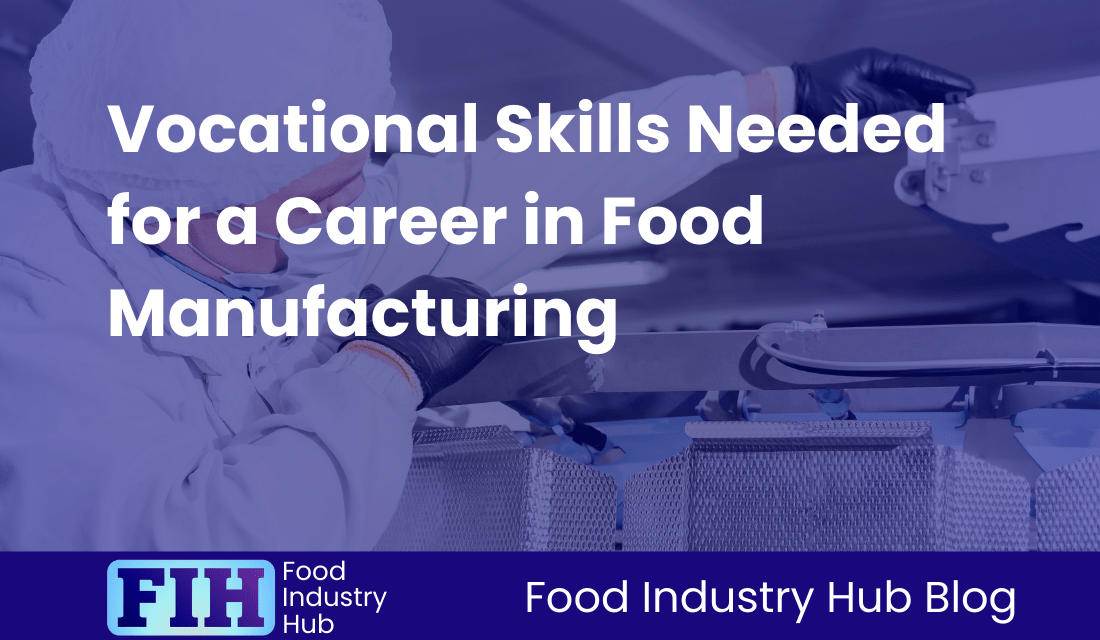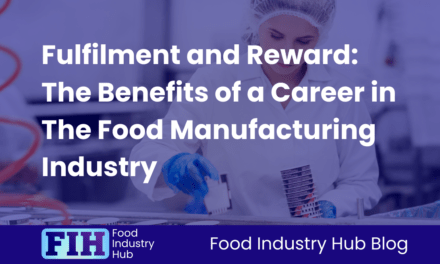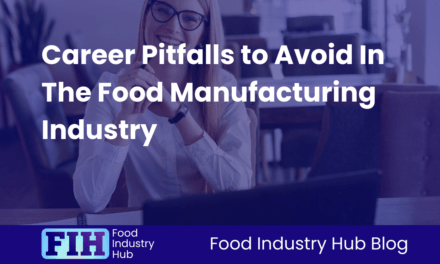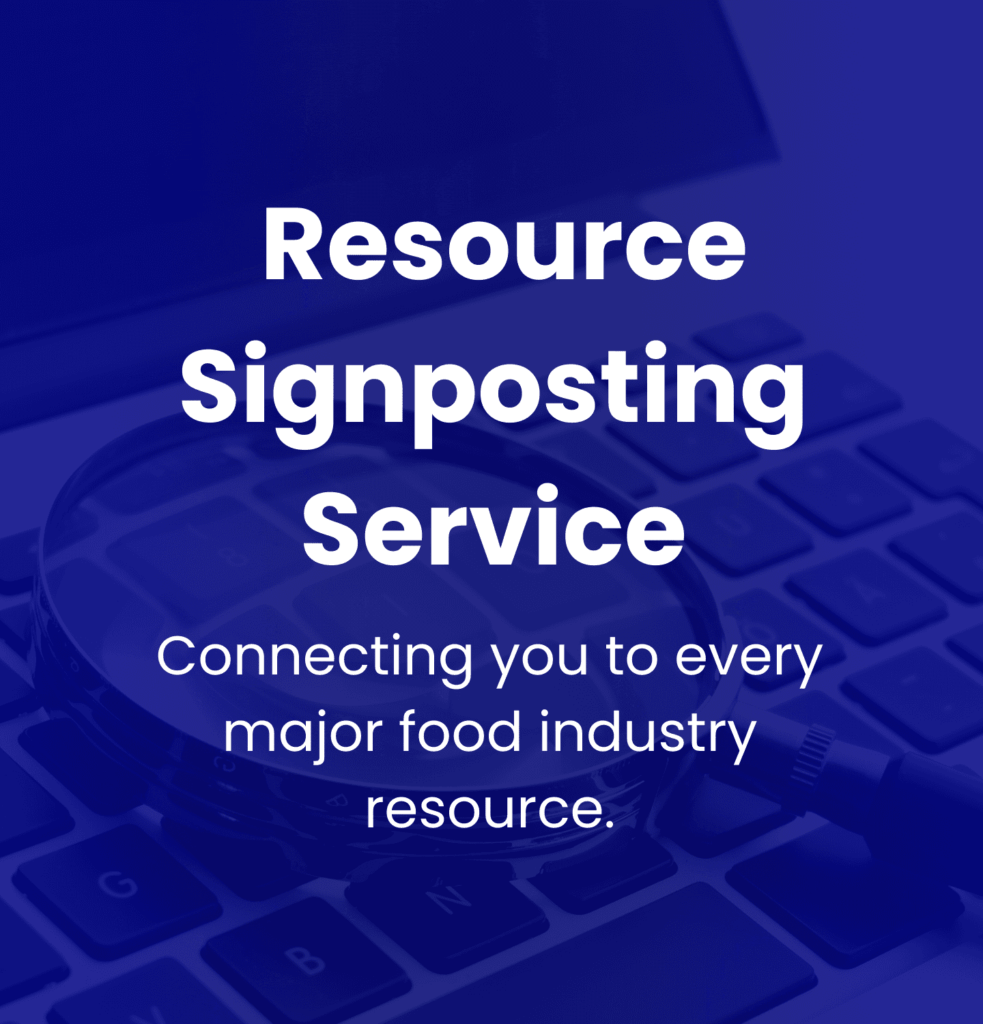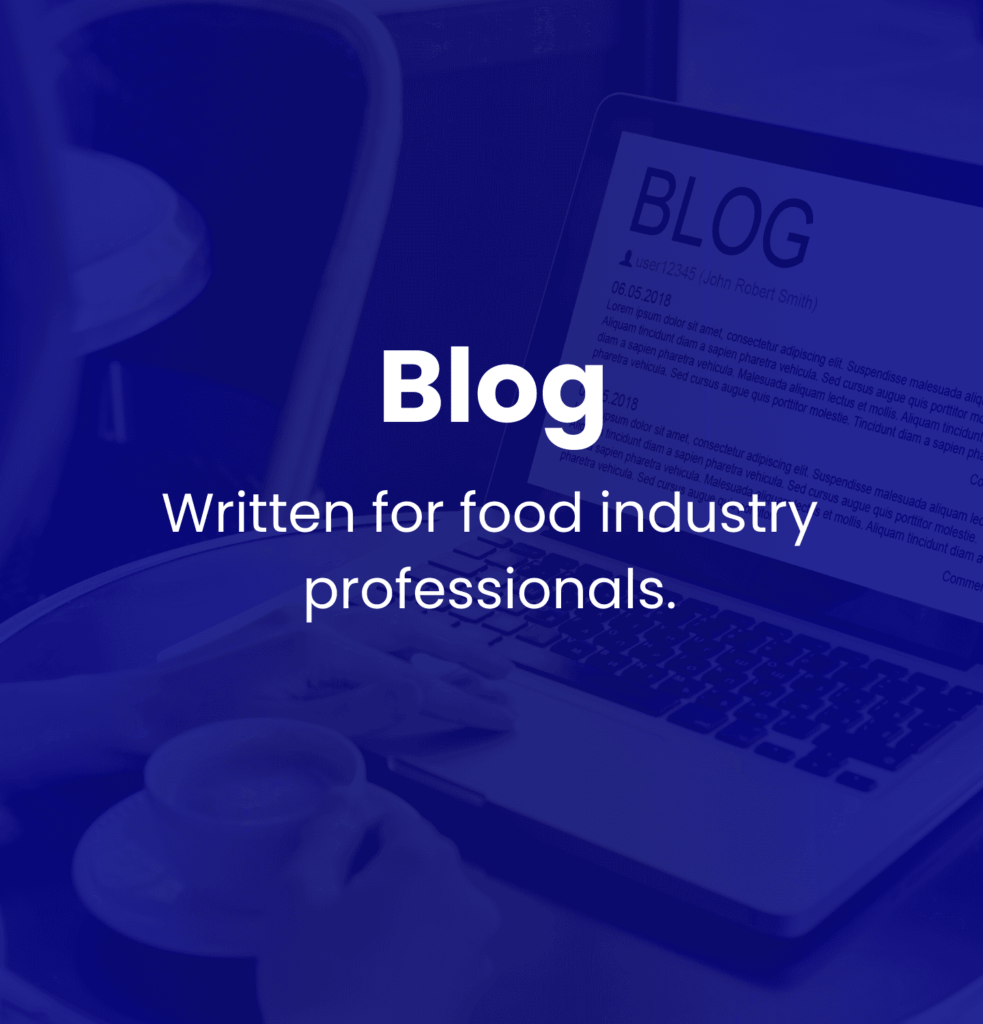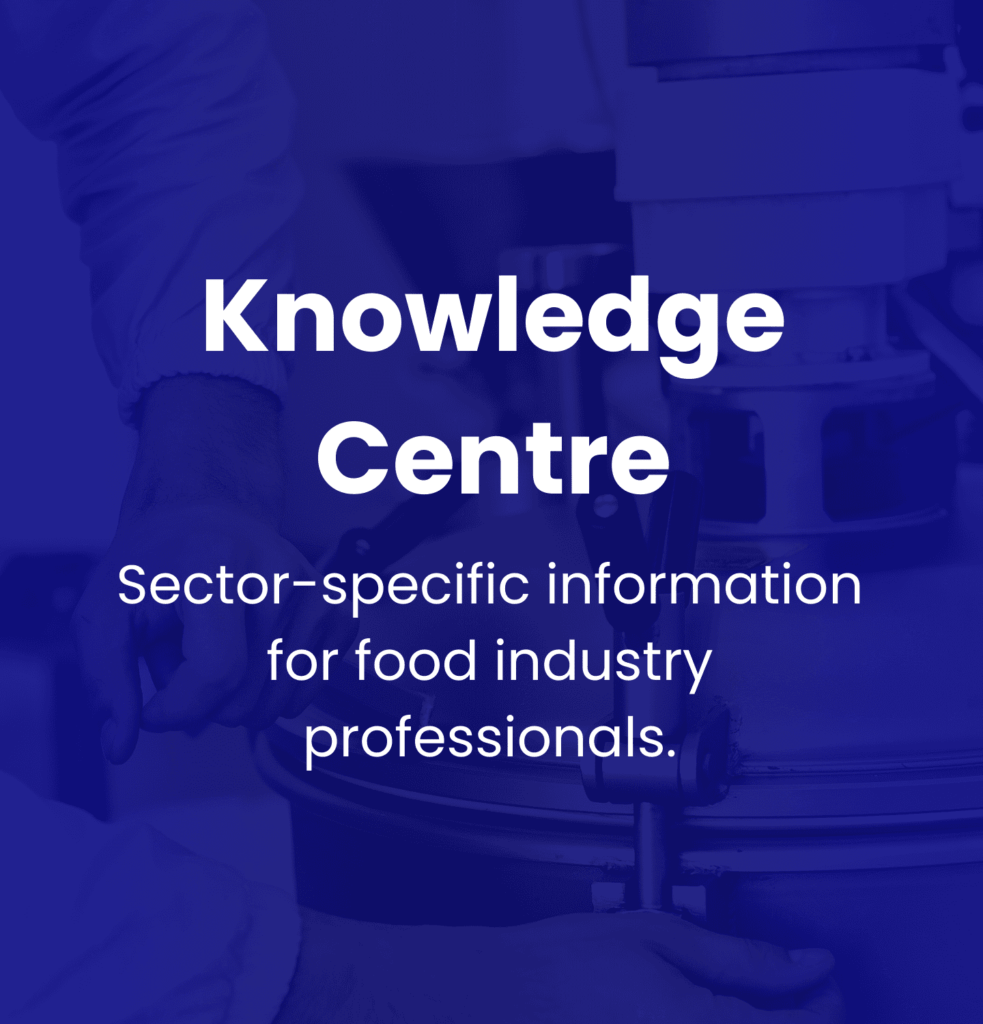Introduction
Are you ready to take your career in food manufacturing to the next level? In today’s competitive industry, having the right skills is essential for success.
From ensuring food safety and quality control to navigating complex regulations, professionals in this field must possess a diverse range of abilities.
But what are these skills, exactly, and why are they so vital?
In this discussion, we will explore the key competencies that can make or break your career in food manufacturing. Get ready to discover the tools you need to thrive in this sector.
Table of Contents
Key Takeaways
- A career in the food industry necessitates a range of skills – some of which will be common to all manufacturing sectors, and some of which will be specific to food manufacturing.
- Strict adherence to food safety and hygiene protocols is crucial in the food manufacturing industry.
- Proper sanitation, equipment maintenance, and packaging technology are essential for ensuring product quality and regulatory compliance.
- Quality control measures, including sensory evaluation and statistical process control, are necessary for maintaining product quality and improving processes.
- Emphasising environmental sustainability and waste management practices is important for both the industry and the well-being of employees and consumers.
Food Safety and Hygiene Practices
Implementing proper food safety and hygiene practices is essential in preventing the contamination and spread of harmful bacteria and pathogens that can cause foodborne illnesses. This makes a grounding in food safety and hygiene methodologies essential for anyone in the food industry.
Food safety and hygiene is a broad undertaking, but conceptually you can think about examples such as…
- It’s important to maintain personal hygiene by regularly washing your hands before handling food, using clean utensils and equipment, and wearing appropriate protective clothing, such as gloves and hairnets. This helps to prevent the transfer of contaminants from your body to the food.
- Always make sure to store and handle food correctly. This includes keeping perishable items refrigerated at the correct temperature, separating raw and cooked foods to prevent cross-contamination, and properly labelling and rotating food products to avoid spoilage.
- Practicing good cleaning and sanitation procedures is vital. Regularly clean and sanitise work surfaces, utensils, and equipment to eliminate any potential sources of contamination. Additionally, ensure that food storage areas, such as refrigerators and freezers, are regularly cleaned and maintained.
The subject of food safety and hygiene is interesting and complex, so it can take a lot of experience and specialist knowledge to master. Anyone looking to pursue a career in food manufacturing should make sure to develop at least a basic grounding in this area – with more developed expertise being required for certain positions.
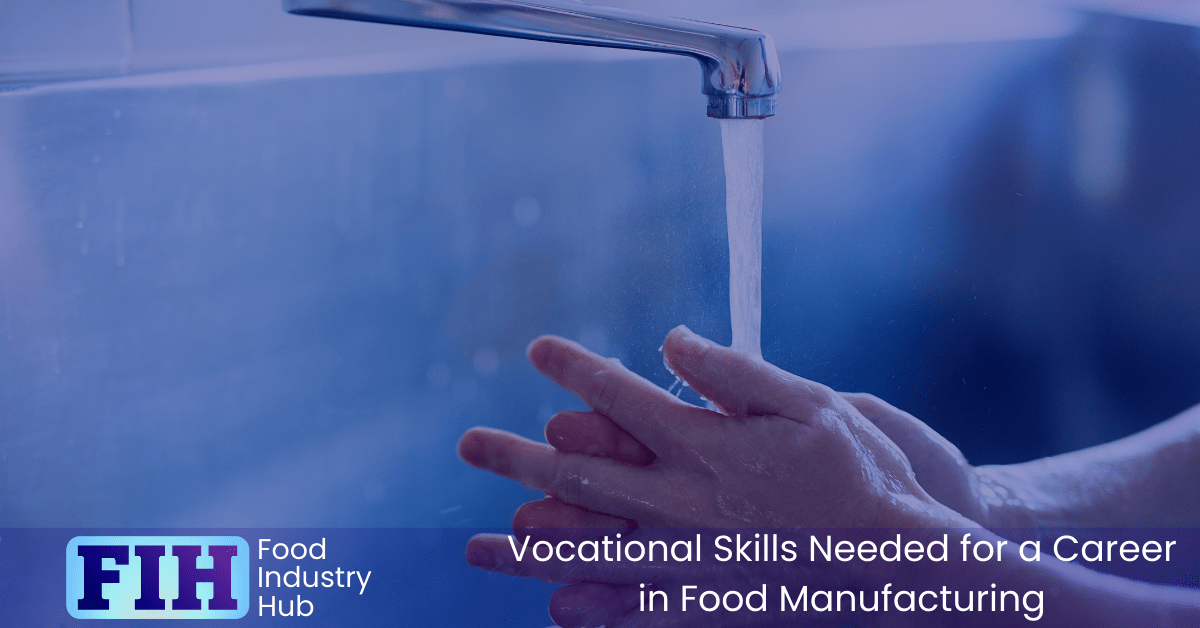
Quality Assurance and Control
Implementing effective quality assurance and control measures is essential in ensuring the production of safe and high-quality food products. The consistent production of safe food of the required quality (as determined by the specification and quality attribute sheet) is a fundamental goal for all food manufacturers – making this a key competence for all food industry professionals.
Quality assurance involves the establishment and implementation of processes that monitor and safeguard the entire production cycle to ensure that the final product meets the desired standards. This includes standardising methods and conducting inspections, tests, and audits at various stages of the manufacturing process.
Quality control, on the other hand, focuses on the inspection and testing of products to ensure that they meet the specified quality standards. This involves checking for defects, measuring product attributes, and conducting sensory evaluations. Quality control measures help to identify and eliminate any substandard products, ensuring that only acceptable quality items are released to the market.
Implementing rigorous quality assurance and control measures not only helps to prevent food safety issues but also enhances customer satisfaction and brand reputation. It ensures that the products meet the expected quality, taste, and appearance. It also helps to support compliance with regulatory requirements and industry standards.
Hazard Analysis and Critical Control Points (HACCP)
Ensure the safety and quality of food products through the implementation of Hazard Analysis and Critical Control Points (HACCP). HACCP is a systematic approach that identifies, evaluates, and controls potential hazards in food production processes. It’s essential for maintaining food safety and preventing foodborne illnesses.
HACCP is a multi-disciplinary pursuit, with inputs needed from all functions and departments. For this reason, HACCP skills really are a necessity for all food industry participants, no-matter what specific career path you choose to go down.
The HACCP system consists of seven principles that need to be followed to ensure its effectiveness. First, you must conduct a hazard analysis to identify potential biological, chemical, allergenic, or physical hazards in the food production process. Next, you need to determine critical control points (CCPs), which are steps in the process where control measures can be applied to prevent or eliminate hazards.
Once CCPs are identified, you must establish critical limits, which are criteria that must be met to ensure the control measures are effective. Monitoring procedures should be implemented to regularly check and record CCPs. If a deviation from the critical limits occurs, corrective actions must be taken to prevent the compromised safety of the food products.
To ensure the HACCP system is working effectively, verification procedures should be conducted, including audits and reviews of records. Lastly, a documentation system should be established to maintain records of the HACCP plan, monitoring results, and corrective actions taken.
At first glance, HACCP can appear to be a risk assessment approach which is completed before a manufacturing process is implemented – but in fact HACCP is an ongoing aspect of all operations. It really is essential that everyone in the food manufacturing industry maintain a solid working knowledge of HACCP and its requirements, so you should consider this an essential skill.
Sign-up for the Food Industry Hub Mail Service
We regularly produce new content for food industry professionals, and the Food Industry Hub Mail Service is the best way to stay up to date with the latest additions.
Signup today to be added to the Food Industry Hub mailing list.
Good Manufacturing Practices (GMP)
You can maintain high standards of safety and quality in food manufacturing by following Good Manufacturing Practices (GMP). GMP is a set of guidelines and approaches designed to ensure that food products are consistently produced and controlled according to industry best practices. By adhering to GMP, you can minimise the risks of contamination, product defects, and other potential hazards.
GMP covers a wide range of areas within food manufacturing, including facility design and maintenance, personnel hygiene, equipment cleanliness, and raw material handling. It emphasises the importance of maintaining a clean and sanitary environment throughout the production process. This includes proper sanitation practices, regular equipment maintenance, and effective pest control measures.
Implementing GMP in your food manufacturing operations can have numerous benefits. It helps you comply with regulatory requirements and meet customer expectations for safe and high-quality products. GMP also enhances efficiency and productivity by reducing the likelihood of errors and rework. Additionally, it facilitates improved traceability and allows for better control over the entire production process.
To ensure successful implementation of GMP, it’s essential to provide appropriate training and education to all employees involved in food manufacturing. Regular audits and inspections should also be conducted to identify any areas for improvement and ensure ongoing compliance with GMP standards. By following GMP, you can establish a solid foundation for success in food manufacturing while prioritising the safety and quality of your products.
‘Good manufacturing practices’ can be literally taken to mean ‘manufacturing in a good way’ – so off all of the skills needed in food manufacturing, you might think of this as the most ambiguously defined. It takes a lot of learning and exposure to get to grips with what the ‘good’ in GMP is referring to specifically – so all food industry professionals should make an ongoing effort to build mastery in this area.
Food Labelling Regulations
It’s important to understand and comply with food labelling regulations. These regulations exist to ensure that consumers have access to accurate and reliable information about the food they purchase. Food labelling regulations cover various aspects, including ingredient declaration, allergen information, nutritional details, and claims made on about the product.
While food labelling regulations are primarily relevant to those in technical and NPD positions, it’s helpful for everyone involved in food production to understand the significance of the information included on labels.
Labelling regulations will be different depending on the market you sell the food products into (e.g. the EU, USA, UK, etc.) – so this is just intended to be a conceptual introduction:
- One key requirement is the inclusion of an ingredient declaration. The ingredient declaration lists all the ingredients used in the product, in descending order of their prominence by weight. It’s essential to accurately declare all ingredients, including any additives or preservatives, to help consumers make informed choices based on their dietary needs or restrictions.
- Another crucial aspect of food labelling regulations is the declaration of allergens. This is particularly important for individuals with food allergies or intolerances. Allergen declarations ensure that consumers can easily identify if a product contains common allergens such as peanuts, tree nuts, milk, eggs, gluten, soy, fish, or shellfish.
- Additionally, nutrition facts must be provided on food labels. These details include information about serving size, calories, macronutrients (such as fat, carbohydrates, and protein), and certain vitamins and minerals. Nutrition information helps consumers make informed decisions about the nutritional content of the food they consume.
- Food labelling regulations also govern the claims made on packaging. Claims such as ‘organic,’ ‘free range,’ ‘gluten-free,’ or ‘low-fat’ must meet specific criteria defined by regulatory authorities. These claims provide consumers with information about specific attributes or characteristics of the product.
Understanding and complying with food labelling regulations is crucial for food manufacturers to ensure that their products meet legal requirements and provide accurate information to consumers. Individuals directly responsible for labels and artwork approval will need to develop and maintain a very detailed understanding of the requirements – both for consumer protection and legal compliance.
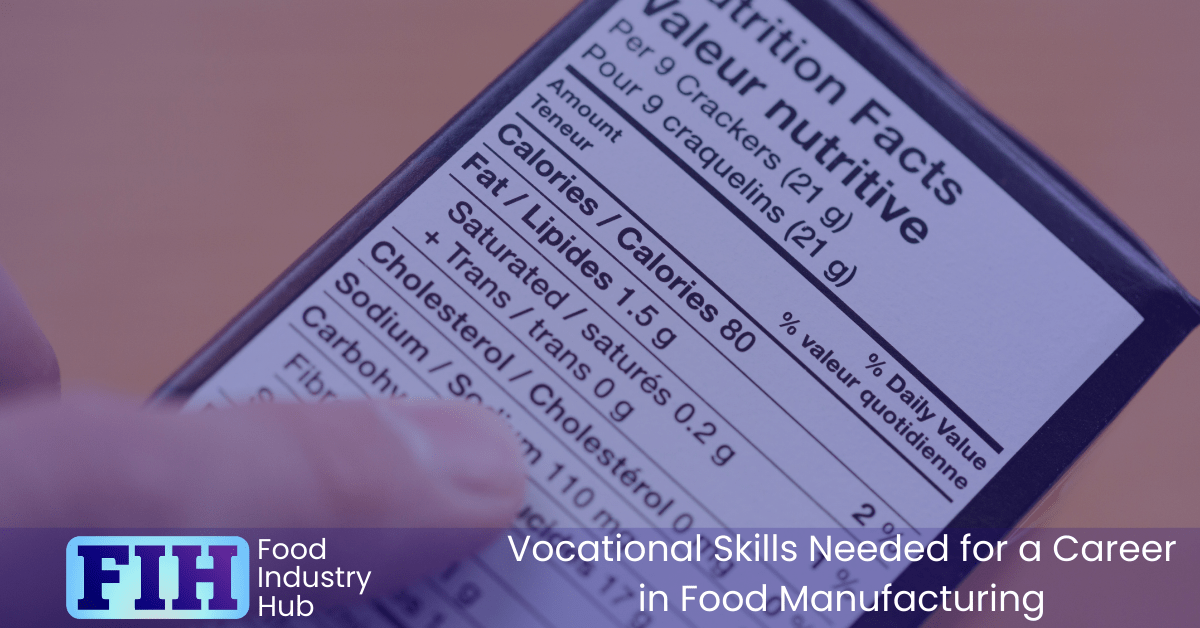
Allergen Control
The food industry isn’t completely unique in its exposure to allergen hazards, but allergen control definitely represents a fundamental concern – so an awareness of food allergens and their control measures should be considered mandatory for anyone operating in this sector.
To effectively control allergens in food manufacturing, it’s essential to implement strict controls and procedures. Allergens, such as peanuts, tree nuts, milk, eggs, wheat, soy, fish, and shellfish, can cause serious health issues for individuals with allergies. Therefore, it’s crucial to have a robust allergen control program in place to prevent cross-contamination and ensure the safety of the final product.
First and foremost, proper labelling and identification of allergens is key. All ingredients must be clearly listed on the product label, and any potential allergens should be highlighted to alert consumers. Keep in mind, many recalls attributed to allergens are actually a result of the wrong product being labelled with a different product’s labels – so label control is a major point of vulnerability for allergen controls.
To minimise the risk of cross-contact, separate equipment and utensils should be used for allergen-free products. This includes dedicated production lines and storage areas. Regular cleaning and sanitation procedures should be implemented to prevent cross-contamination.
Regular testing and monitoring should also be conducted to verify the effectiveness of the allergen control measures. This can involve swabbing surfaces and testing finished products for allergen presence. Any deviations or issues should be promptly addressed to prevent potential allergic reactions.
Allergen control is largely rooted in proper identification and labelling, coupled with segregation and hygiene practices to prevent contamination. With this in mind, allergen controls might be considered among the more accessible skills featured in this list.
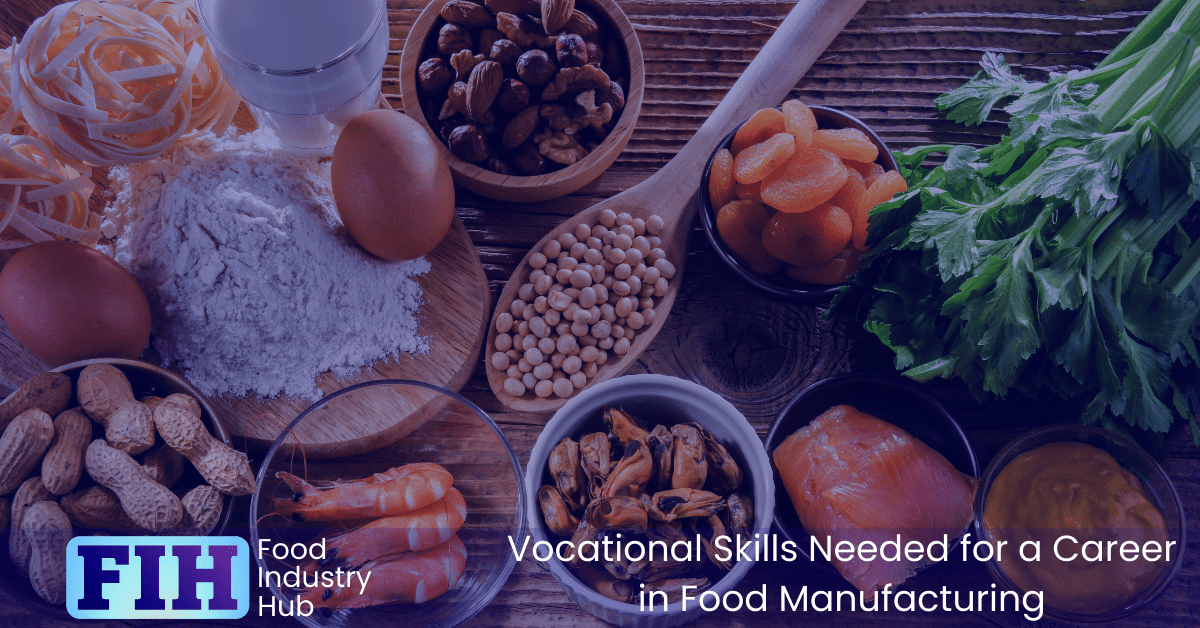
Sanitation and Cleaning Procedures
Proper sanitation and cleaning procedures are crucial in maintaining a microbiologically safe and allergen-free environment in food manufacturing facilities. It can be easy for people to have a misconception that cleaning and hygiene activities aren’t very demanding of skill and expertise, but that’s entirely incorrect – just ask any hygiene manager!
When it comes to sanitation and cleaning, there are several key competencies that come into play… Though the considerations we’ve listed here is by no means exhaustive:
First, it’s important to thoroughly clean and sanitise all equipment and surfaces before and after each use. This includes not only the production equipment, but also the packaging materials, utensils, and work areas. This is where a cleaning schedule and associated risk assessment comes into play.
Second, it’s essential to use the right cleaning agents and sanitisers. Different surfaces and equipment may require different types of cleaning solutions, so it’s important to understand which products are appropriate for each situation. Remember to always follow the manufacturer’s instructions when using cleaning agents and sanitisers to ensure their effectiveness.
Third, proper cleaning techniques must be employed. This involves scrubbing, rinsing, and drying surfaces and equipment thoroughly to remove any dirt, residue, or potential allergens. There should ideally be a cleaning instruction card (CIC) for each cleaning operation.
Effective cleaning and sanitisation can require engineering skills in addition to a solid grounding in chemical (appropriateness, concentration, and legal restrictions) and practical application (contact time, temperature, mechanical action) – because cleaning often requires equipment to be taken apart and reassembled.

Equipment Operation and Maintenance
Regular and proper operation and maintenance of equipment are essential for ensuring optimal performance and longevity. As a professional in the food manufacturing industry, it’s crucial for you to understand the importance of effectively operating and maintaining equipment. By doing so, you can minimise downtime, reduce the risk of equipment failure, and maximise productivity.
When it comes to equipment operation, it’s vital to familiarise yourself with the specific machinery you’ll be working with. Read the instruction manuals, attend training sessions, and seek guidance from experienced operators. Proper operation involves following established procedures, adhering to safety protocols, and monitoring equipment performance. Regular inspections and checks should be conducted to identify any signs of wear and tear, loose components, or abnormal functioning.
Maintenance is equally important in ensuring the longevity of your equipment. Regular cleaning, lubrication, and calibration, as recommended by the manufacturer, can help prevent breakdowns and extend the lifespan of the machinery. Additionally, addressing minor issues promptly can prevent them from escalating into major problems. Keep accurate records of maintenance activities, including dates, tasks performed, and any repairs made.
Packaging Technology
Understanding the principles and applications of packaging technology is essential for professionals in the food manufacturing industry. Packaging technology plays a crucial role in ensuring that food products are safely stored, transported, and delivered to consumers. It involves the design, development, and implementation of packaging solutions that meet specific requirements such as preserving product freshness, preventing contamination, and enhancing product visibility.
In the food manufacturing industry, packaging technology encompasses a wide range of techniques and materials. Professionals in this field need to have a thorough understanding of various packaging formats, such as bottles, cans, pouches, and cartons, as well as the different materials used, including plastics, glass, and paperboard. They must also be familiar with the latest advancements in packaging technology, such as modified atmosphere packaging and active packaging, which help to extend the shelf life of food products.
Packaging technology professionals are responsible for ensuring that packaging solutions meet regulatory requirements and industry standards. They need to have knowledge of quality control processes, including testing and inspection methods, to ensure that packaging materials and products are safe and of high quality.
Food Processing Techniques
To ensure the highest quality and safety of food products, it’s important to be familiar with various food processing techniques. Food processing techniques involve a series of steps that transform raw ingredients into finished food products. These techniques are crucial in maintaining the nutritional value, flavour, texture, and shelf life of the food.
One of the most common food processing techniques is preservation. Preservation methods such as canning, freezing, and drying help to extend the shelf life of food by inhibiting the growth of bacteria, yeast, and moulds.
Another important technique is pasteurisation, which involves heating food products to a specific temperature to destroy harmful microorganisms. This technique is commonly used in dairy products and juices to ensure that they’re safe for consumption.
Food processing techniques also include techniques such as fermentation and smoking. Fermentation is the process of converting carbohydrates to alcohol or organic acids using yeast or bacteria. This technique is widely used in the production of bread, beer, yogurt, and sauerkraut. Smoking, on the other hand, involves exposing food to smoke from burning or smouldering materials to enhance flavour and preserve the food.
Understanding and implementing these food processing techniques is essential for ensuring the quality, safety, and consistency of food products. By mastering these techniques, you can contribute to the success of the food manufacturing industry and provide consumers with safe and delicious food options. In short, anyone interested in pursuing a career in the food industry should make sure to stay abreast of food processing techniques and maintain a high level of skill in this area.
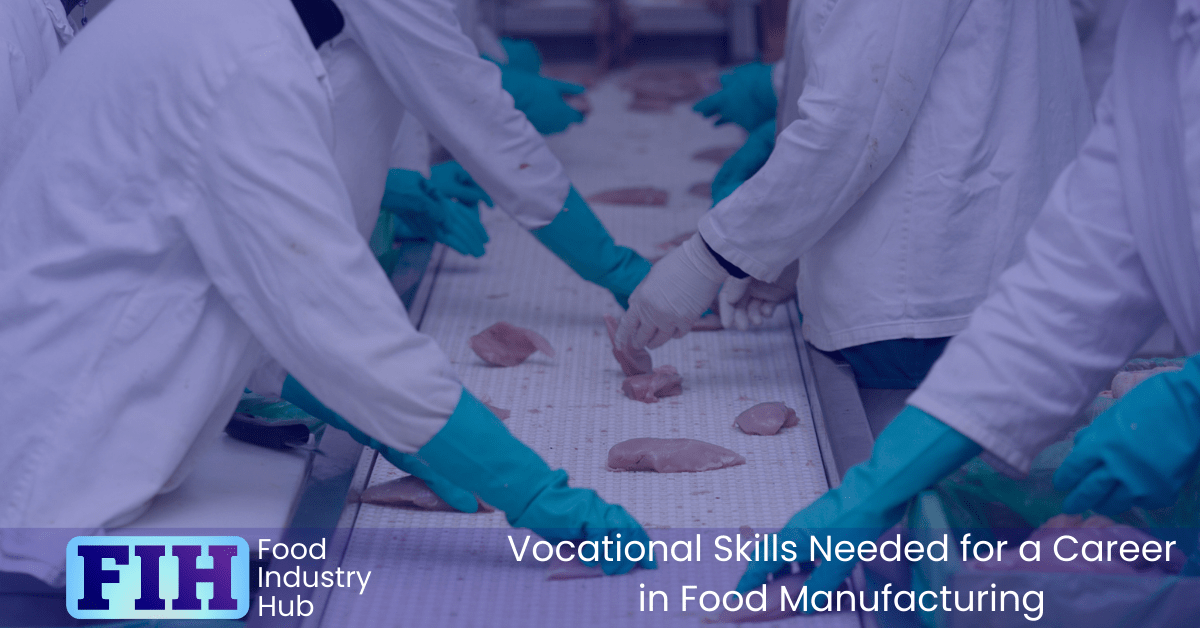
Supply Chain Management
Food manufacturing businesses can have complex supply chains – so supply chain management skills are incredibly useful.
You can effectively manage the supply chain by implementing efficient processes and utilising modern technology. In today’s fast-paced food manufacturing industry, supply chain management plays a crucial role in ensuring the smooth flow of goods from the supplier to the consumer. By optimising your supply chain, you can minimise costs, reduce waste, and improve customer satisfaction.
One way to enhance supply chain management is by implementing efficient processes. This involves streamlining activities such as procurement, production, and distribution. By analysing your current processes and identifying areas for improvement, you can eliminate bottlenecks and increase overall efficiency. For example, implementing just-in-time inventory management can help reduce inventory holding costs and minimise waste.
Modern technology also plays a vital role in effective supply chain management. Utilising tools such as inventory management software, barcode scanning systems, and real-time tracking can provide you with accurate and up-to-date information about your inventory levels, delivery schedules, and customer demands. This enables you to make informed decisions and respond quickly to any changes or disruptions in the supply chain.
Inventory Control
Efficient supply chain management requires effective inventory control strategies to optimise the flow of goods and minimise costs. Inventory control is the process of overseeing and managing the stock of raw materials, work-in-progress, and finished goods throughout a food manufacturing company. It involves tracking inventory levels, monitoring demand, and ensuring that there’s enough stock to meet customer orders without excess or shortage.
To implement effective inventory control, food manufacturing companies utilise various techniques and tools. One common approach is the use of inventory management software that allows for real-time tracking of inventory levels, enabling better visibility and control. By accurately tracking inventory, companies can reduce the risk of stockouts, minimise storage costs, and avoid overstocking.
Additionally, implementing proper forecasting methods is crucial for effective inventory control. By analysing historical data and market forecasts, companies can predict future demand and adjust their inventory levels accordingly. This helps to prevent excess inventory and reduce the risk of waste and obsolescence.
Another important aspect of inventory control is conducting regular audits and cycle counts to ensure accuracy. By regularly checking the physical inventory against the recorded quantities, companies can identify any discrepancies and take corrective actions to maintain inventory accuracy.
Like supply chain management skills, inventory control is a competency needed in the food industry but is also required across many manufacturing sectors. In this way, inventory control skills are advantageous to food industry professions, and also transferable across different industries.
Sensory Evaluation
Sensory evaluation plays a crucial role in the food manufacturing industry for assessing the quality and characteristics of products through human senses. It involves the use of sight, smell, taste, touch, and sometimes even sound to evaluate food products. This process helps manufacturers ensure that their products meet the desired standards and specifications.
One of the main purposes of sensory evaluation is to determine the overall acceptability of a food product. By conducting sensory tests, such as taste panels or consumer preference tests, manufacturers can gather valuable feedback on the taste, texture, appearance, and aroma of their products. This information is then used to make necessary adjustments or improvements to meet consumer expectations.
Moreover, sensory evaluation is also used to detect any off-flavours, off-odors, or other defects in food products. Trained sensory panellists are able to identify and quantify these sensory attributes, helping manufacturers identify any quality issues and take corrective actions. By doing so, they can ensure that only products of the highest quality reach the market.
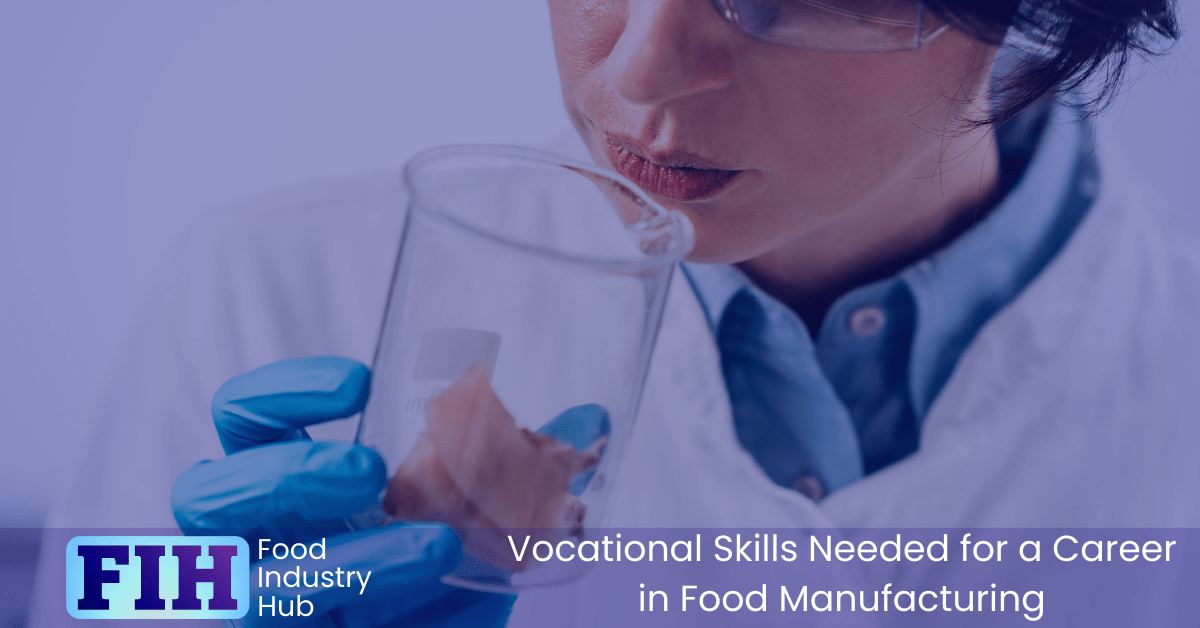
Food Microbiology
Food microbiology is a discipline that focuses on the study of microorganisms in food and their impact on food safety and quality. It plays a crucial role in ensuring that the food we consume is safe and free from harmful microorganisms that can cause foodborne illnesses. Food microbiologists work to identify and understand microorganisms present in food, their growth patterns, and how they can be controlled or eliminated.
Microorganisms such as bacteria, yeasts, and moulds are naturally present in the environment and can contaminate food during production, processing, and storage. Food microbiologists use various techniques to analyse and identify these microorganisms, including culturing, plating, and microscopy. By studying the microorganisms, they can determine their potential to cause food spoilage or foodborne diseases.
Food microbiology also focuses on understanding the factors that influence the growth and survival of microorganisms in food. This knowledge helps in developing strategies to prevent or control their growth, such as temperature control, pH adjustment, and the use of preservatives.
Food microbiologists also play a crucial role in conducting risk assessments to evaluate the safety of new food products or processing methods, but you don’t need to be a microbiologist to benefit from a solid working knowledge of microbiology. No-matter what department you work in, it’s helpful to have an understanding of microbiology.
Statistical Process Control
Statistical process control allows you to analyse and understand the variability in your processes, ensuring that your products consistently meet the desired specifications. Statistical process control involves collecting data at various stages of the production process and using statistical methods to analyse and interpret this data. By doing so, you can identify any potential issues or trends that may affect the quality of your products.
One of the key concepts in statistical process control is control charts. These charts provide a visual representation of the data collected over time, allowing you to identify any patterns or deviations from the desired standards. By monitoring these control charts, you can quickly detect any variations and take appropriate actions to bring the process back under control.
This analytical approach can help you understand the capability of your processes, identify any sources of variation, and determine the impact of different factors on the quality of your products. Since every food manufacturer strives for the manufacture of consistent quality products, the ability to analyse process deviations and standardise performance will be beneficial to all professionals in this sector.
Food Product Development
Developing new food products requires a thorough understanding of consumer preferences and market trends. In order to create successful and innovative food products, you need to stay up to date with the latest trends and preferences of consumers. This involves conducting market research, analysing data, and identifying opportunities for product development.
One key aspect of food product development is conducting consumer taste tests and gathering feedback. By involving consumers in the development process, you can ensure that your products meet their expectations and preferences. This can be done through focus groups, surveys, and taste panels.
Another important factor to consider in food product development is food safety and quality. It’s crucial to make sure any development products adhere to industry regulations and standards to ensure that your products are safe for consumption. This includes proper labelling, packaging, and storage methods.
Creativity and innovation play a pivotal role in food product development. You need to think outside the box and come up with unique and appealing ideas that will capture the attention of consumers. This may involve experimenting with different ingredients, flavours, and textures to create new and exciting food products.
Environmental Sustainability in Food Manufacturing
To ensure sustainable practices in food manufacturing, it’s important to prioritise environmental conservation and minimise the industry’s carbon footprint. Environmental sustainability refers to the responsible use of resources and practices that minimise negative impacts on the environment. In the food manufacturing industry, this means adopting strategies to reduce energy consumption, waste generation, and greenhouse gas emissions.
One way to achieve environmental sustainability is by implementing energy-efficient practices. This can involve using energy-saving equipment, optimising production processes, and investing in renewable energy sources. By reducing energy consumption, companies not only lower their carbon emissions but also reduce costs.
Another important aspect of environmental sustainability is waste reduction and management. Food manufacturing companies can implement recycling and diversion of waste streams to animal feed to minimise waste sent to landfills. Additionally, they can explore innovative packaging solutions that are eco-friendly and biodegradable.
Water conservation is also crucial in achieving environmental sustainability. Companies can invest in water-saving technologies, such as water-efficient equipment and systems that recycle and reuse water in their production processes.
Environmental and sustainability concerns are increasing in importance across the industry and regulatory agencies – making this a prominent area of competence to develop.
Waste Management and Recycling
By implementing effective waste management and recycling practices, food manufacturing companies can further contribute to environmental sustainability and minimise their impact on the environment. Waste management involves the proper handling, disposal, and treatment of waste generated during the production process. Recycling, on the other hand, focuses on converting waste materials into useful products or raw materials.
In the food manufacturing industry, waste can come in various forms, such as packaging materials, food scraps, and processing by-products. It’s crucial for companies to have systems in place to segregate and manage these wastes effectively. This includes implementing recycling programs for materials that can be reused or repurposed, such as cardboard, plastic, and glass.
Proper waste management and recycling practices can yield several benefits. Firstly, it reduces the amount of waste that ends up in landfill, helping to conserve valuable space and prevent environmental pollution. Secondly, recycling can help conserve natural resources by reducing the need for new raw materials. Additionally, it can also lead to cost savings for companies by reducing waste disposal fees and potentially generating revenue from the sale of recycled materials.
To implement effective waste management and recycling practices, food manufacturing companies should invest in appropriate infrastructure, such as waste sorting and recycling facilities. They should also educate their employees about the importance of waste reduction and recycling and provide them with the necessary training and resources.
Health and Safety
Food manufacturing companies must prioritise compliance with health and safety regulations to ensure the well-being of their employees. These regulations are in place to protect everyone involved in the production of food products. By adhering to these rules, companies can minimise the risk of accidents and injuries.
Food businesses must provide training and education to their employees regarding health and safety practices. This includes proper handling of equipment, use of personal protective equipment, and knowledge of emergency procedures. Employees should also be encouraged to report any potential hazards or unsafe conditions to their supervisors.
Regular inspections and audits should be conducted to ensure compliance with health and safety regulations. This not only helps identify any areas that need improvement but also demonstrates the company’s commitment to maintaining a safe working environment.
Health and safety should be the first priority of any business, and food businesses are no exception. Every professional should put some focus into health and safety knowledge for the sake of themselves, their colleagues, and the organisation they work for.
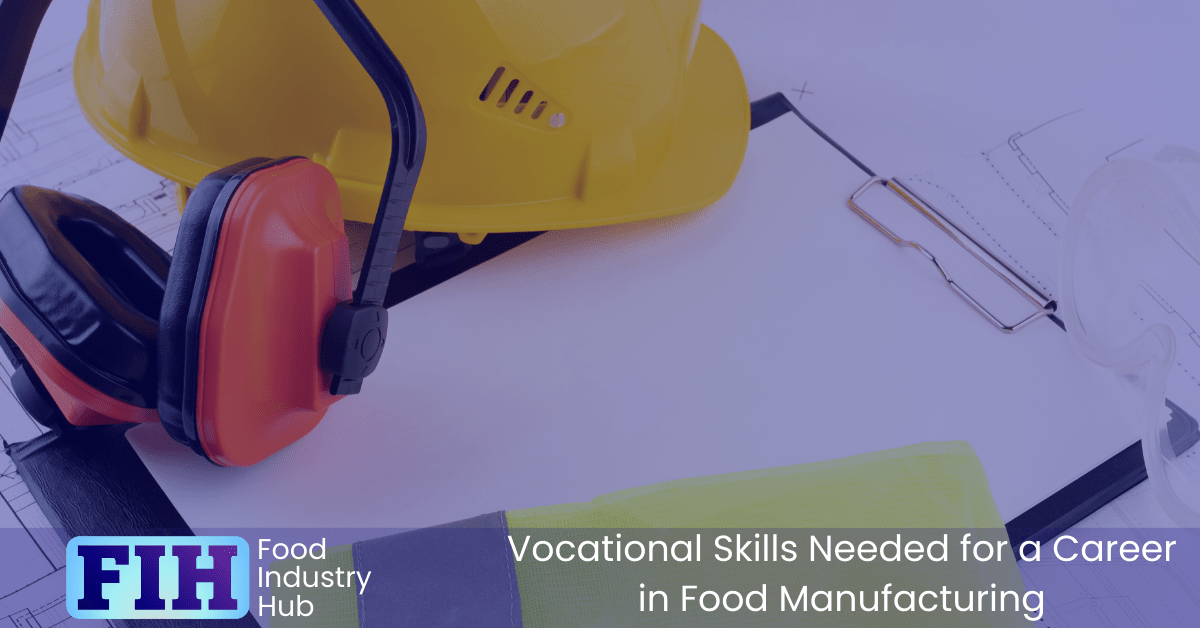
Project Management
Statistical process control allows you to analyse and understand the variability in your processes, ensuring that your products consistently meet the desired specifications. Statistical process control involves collecting data at various stages of the production process and using statistical methods to analyse and interpret this data. By doing so, you can identify any potential issues or trends that may affect the quality of your products.
One of the key concepts in statistical process control is control charts. These charts provide a visual representation of the data collected over time, allowing you to identify any patterns or deviations from the desired standards. By monitoring these control charts, you can quickly detect any variations and take appropriate actions to bring the process back under control.
This analytical approach can help you understand the capability of your processes, identify any sources of variation, and determine the impact of different factors on the quality of your products. Since every food manufacturer strives for the manufacture of consistent quality products, the ability to analyse process deviations and standardise performance will be beneficial to all professionals in this sector.
Continuous Improvement and Lean Manufacturing
Continuous improvement focuses on constantly finding ways to enhance processes, products, and services in order to increase efficiency and quality. Lean manufacturing, on the other hand, aims to eliminate waste and streamline operations by identifying and eliminating activities that don’t add value to the final product. Both of these concepts are crucial for achieving success in the food manufacturing sector.
Continuous improvement involves regularly reviewing and analysing processes to identify areas for improvement. By implementing small changes and monitoring their impact, companies can gradually optimise their operations. This can lead to reduced costs, increased productivity, and improved customer satisfaction. Additionally, continuous improvement fosters a culture of innovation and encourages employees to actively contribute to the growth and success of the organisation.
Lean manufacturing complements continuous improvement by focusing on waste reduction. This waste can take various forms, such as excess inventory, unnecessary movement of materials, or inefficient use of resources. By implementing lean principles, companies can create a more streamlined and efficient production system that eliminates waste and maximises value.
In Summary
There’s a wide range of technical skills that are particular to the food industry. Some skills will be more applicable to specific disciplines such as NPD, quality, or systems development – while others will be universally relevant.
Irrespective of the particular career route you choose to follow, it will be essential to develop these skills to some extent.
Further Resources
Food Industry Hub serves the food industry with a range of digital resources for the benefit of both commercial food manufacturers and food industry professionals.
For food manufacturers, we offer integrated management systems that give every user a direct interface with your QMS.
For food industry professionals, we provide an extensive signposting service in addition to informational content we hope you’ll find useful as you face new professional challenges. We have very ambitious plans to expand the range of services offered, and currently present informational content on management, safety and quality, and professional success.

